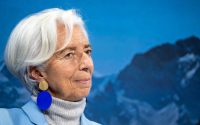Can China Export Its Way Out of Its Economic Slump?
China dominates the global sale of solar panels and has caught up with Japan as the world’s largest car exporter. It is even gaining in the worldwide sale of low-tech products like shoes.
Now Beijing is weighing whether to deploy its considerable power as an exporter to try to stabilize an economy laboring under distinctly homegrown problems — a real estate crisis and weak spending by consumers still cautious after nearly three years of stringent pandemic restrictions. The decision could reverberate throughout the global economy and provoke a backlash among trading partners that are already under siege by China’s exports.
“For the second-largest economy in the world to rely on the rest of the world to bolster its growth would not be a good portent for global economic prospects,” said Eswar Prasad, an economist at Cornell University.
Top Chinese government officials have said they plan to invest in upgrading industries and in promoting more domestic commerce, and not just flood foreign markets with manufactured goods like electric vehicles. But economists say the experience of countries with consumer spending problems suggests that a wave of Chinese exports is likely.
Relying on exports to juice growth is a tried-and-true formula for China. And Beijing has a powerful lever in its currency, the renminbi, which it has allowed to decline about 7 percent against the dollar since mid-January. That makes the relative cost of China’s goods cheaper to buyers in other countries.
“The normal way for a country to get out of a real estate slump is to export your way out,” said Brad Setser, a former international economics policymaker in the Obama and Biden administrations who is now at the Council on Foreign Relations.
China’s property problems are entrenched. A glut of vacant and unfinished housing has led to a steep fall in construction, previously the country’s biggest industry. Developers are drowning in debt. On Friday, two Chinese property companies halted some payments on their overseas debt, and the shares of developers have sold off in recent days. An erosion in prices for homes, the main asset for Chinese households, has made hundreds of millions of households across the country more cautious about spending money at all.
At the same time, local governments, which spent heavily during the pandemic, have sunk so far in debt that they are struggling to provide health care for residents and pay the salaries and pensions of civil servants.
Thailand and other Southeast Asian nations exported their way out of economic trouble after the Asian financial crisis in 1997 and 1998. Ireland and Spain did the same after the global banking collapse in 2008 and 2009. Greece did so after Europe’s financial troubles in the following years.
Yet China could invite political blowback from countries worried that a flood of exports could erode their own economies, costing workers their jobs and companies their market share.
In Europe, a key market for China for a wide variety of goods, officials and business leaders have signaled that they are wary of China’s surging trade surplus because they are already struggling to cope with an influx of Chinese cars. And China’s close partnership with Russia, a country now reviled across much of Europe for its invasion of Ukraine, has caused alarm in Europe about the continent’s reliance on China.
China is stepping up exports instead to Southeast Asia, which does further processing of these goods and sends them on to Europe and the West, said Deborah Elms, the executive director of the Asian Trade Center, a trade consulting firm in Singapore.
But there is also a practical challenge for China: Its trade surplus in manufactured goods is so large — equal to a 10th of the entire Chinese economy, by Mr. Setser’s calculations — that it may be hard to expand it further.
According to the United Nations Industrial Development Organization, China accounts for almost a third of the entire world’s manufacturing output.
Further growth may be especially hard now because some of China’s biggest export markets are showing signs of weakness after interest rate increases to fight inflation.
“The demand is weaker compared to that of last year,” said Zhou Shaopeng, a sales manager at a plastic pipe production company in Hebei Province.
But the recent slide in China’s currency could set off a rebound in exports. Government statements in recent weeks have emphasized plans to streamline commerce within China’s borders, and not just exports.
“China is realizing how to put these two together, how to integrate them — maybe this is more important than just foreign trade,” said Zhan Yubo, director of the Western Economics Research Office at the Shanghai Academy of Social Sciences, a government advisory institution.
While increasing exports poses political risks, experts said, there is one area where China has room to expand its overseas sales: new technologies. China has quadrupled its car exports in just two years, to more than $6 billion per month, through its clout in electric vehicles. The value of its car exports passed smartphone exports for the first time last month.
Two decades of heavy investments in electric cars and other innovations are producing rising sales and growing employment, as can be seen at factories on the eastern outskirts of Shanghai.
Tesla has a vast factory in Shanghai and already exports large numbers of cars across Europe and Asia in addition to supplying the Chinese market. General Motors also has big factories in the city. Underpinning those operations is a dense web of suppliers.
One of those companies, Kunyi Electronics Technology, which makes specialized tools for researchers working on autonomous cars, invested 45 percent of its revenues last year in research and development, said Chen Zhongming, its chief executive. The company has tripled employment in the past three years, to 450 people.
Domestic and foreign automakers in China, he said, are now “willing to put much more of their revenues into research and development.”
SinoFuelCell, a Shanghai company that makes hydrogen-based propulsion systems mostly for freight trucks, has focused on reducing costs to make fuel cells more competitive with internal combustion engines.
“One guy used to take care of one machine — now, one guy can take care of two machines,” said David Dai, the general manager, as he walked past a factory row of machines that assembled the fuel cells. “Next month, a robot will take care of six machines.”
Green energy is another area where China is thriving. Its exports of solar panels have tripled in the past three years, to nearly $5 billion per month. Even though countries in the European Union, in North America and elsewhere are ramping up their own production, China’s exports are likely to continue growing, said Yan Qin, an energy analyst at the London Stock Exchange Group.
Experts at the World Bank and elsewhere have said China should try to shore up its domestic economy by strengthening health insurance, pensions and other aspects of the social safety net, so that Chinese households will feel more confident to spend money.
But that kind of shift would take time. For now, China is still sinking money into investments, including ever more roads and rail lines but also lots of factories.
“Investment creates jobs,” Mr. Zhan said. “Jobs create income and salaries, income and salaries will create consumption.”
Li You contributed research.


